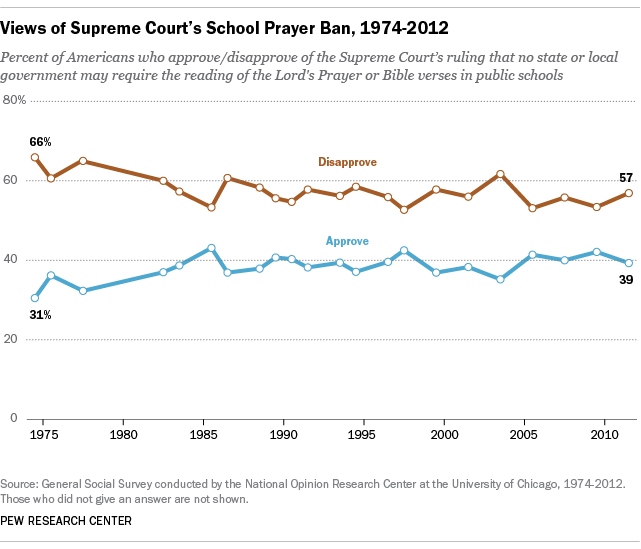Learnin’ On a Prayer
March 22, 2018
The Supreme Court made the correct ruling in the case of Santa Fe Independent School District v. Doe. The school violated the establishment clause of the Constitution by allowing a student to lead a prayer over the P.A. system before football games.
The establishment clause is part of the First Amendment that creates a virtual wall between the government and religion. The clause says: “Congress shall make no law respecting an establishment of religion, or prohibiting the free exercise thereof” (U.S. Constitution. Amend. I). This means that the government cannot make laws supporting a specific religion or preventing people from freely exercising their religion.
This is further supported by precedents set in previous Supreme Court rulings banning school-endorsed prayer in schools. The first of such cases was Engel v. Vitale, in which the court said a state or school officially approving a religion was unconstitutional” (“Engel v. Vitale.” Oyez, 7 Mar. 2018). Allowing a student to use the school’s P.A. system or a prayer clearly shows support for a specific religion and is unconstitutional.
It can be argued that the school did not violate the establishment clause based on the precedent set in the case Westside Community Schools v. Mergens. In this case the court ruled that schools could have religious clubs if they had other student interest clubs. However, while the school had to allow these clubs they were prohibited from supporting or endorsing the group. In the case of Santa Fe Independent School District v. Doe, allowing the student to use the PA system clearly indicates a level of support that is forbidden.
Fifty-seven percent of Americans disagree with the Supreme Court’s ruling and believe that school-sponsored prayer should be allowed in schools. In the South, this number rises to 73 percent. Since the Supreme Court’s decision in Engel v. Vitale, the court has never had the support of the majority of people. This data from the General Social Survey, conducted by the University of Chicago between 1974 and 2012, shows why schools endorsing prayer remains a controversial issue today.


